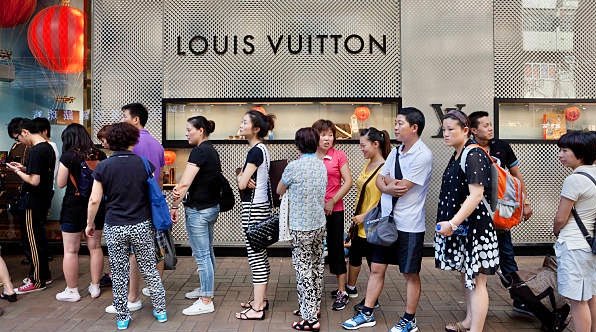The luxury market is facing an unprecedented slowdown, leaving high-end brands scrambling to adapt to the changing landscape. As the global economy continues to experience uncertainty, luxury consumers are becoming increasingly cautious with their spending habits. In this survival guide, we delve into the key questions on everyone’s mind: when will the slowdown end, how can brands win back aspirational shoppers, and how expensive is too expensive?
The luxury market has long been driven by consumer desire for exclusivity, high-quality craftsmanship, and unique experiences. However, as the global economy has slowed down, luxury consumers have become more discerning and budget-conscious. According to recent reports, the luxury market is expected to experience a significant decline in growth, with some estimates suggesting that the market may contract by as much as 10% in the coming year.
So, when will the slowdown end? Industry experts predict that the luxury market will experience a prolonged period of slow growth, with some estimates suggesting that the market may not recover until 2026. However, there are opportunities for brands to adapt and thrive in this new landscape. By focusing on sustainability, digital innovation, and experiential marketing, luxury brands can win back aspirational shoppers and drive growth.
But how can brands win back aspirational shoppers? The key is to create a sense of connection and community with consumers. Luxury brands can achieve this by investing in digital marketing and e-commerce platforms, creating immersive brand experiences, and partnering with influencers and brand ambassadors. Additionally, brands must prioritize sustainability and social responsibility, as these values are increasingly important to luxury consumers.
Another key question on everyone’s mind is: how expensive is too expensive? The answer is complex and depends on a variety of factors, including the brand’s heritage, craftsmanship, and exclusivity. However, as the luxury market slows down, brands must be mindful of pricing and ensure that their products and services offer value for money. Consumers are increasingly savvy and will not tolerate overpricing, so brands must be transparent and authentic in their pricing strategies.
As the luxury market continues to evolve, brands must be agile and adaptable to survive. This means investing in digital innovation, prioritizing sustainability and social responsibility, and creating immersive brand experiences. By doing so, luxury brands can win back aspirational shoppers and drive growth, even in a slowing market.
In the coming months and years, the luxury market will continue to face challenges and uncertainties. However, by prioritizing innovation, sustainability, and customer experience, luxury brands can thrive and emerge stronger than ever. As the industry continues to evolve, one thing is certain: the luxury market will never be the same again.
The luxury slowdown has significant implications for the wider economy, as the industry is a major driver of growth and employment. As the market slows down, there will be a ripple effect throughout the economy, impacting suppliers, manufacturers, and retailers. However, by adapting to the changing landscape and prioritizing innovation and sustainability, luxury brands can mitigate the impact of the slowdown and emerge stronger than ever.
In conclusion, the luxury market is facing an unprecedented slowdown, but there are opportunities for brands to adapt and thrive. By prioritizing innovation, sustainability, and customer experience, luxury brands can win back aspirational shoppers and drive growth, even in a slowing market. As the industry continues to evolve, one thing is certain: the luxury market will never be the same again.
As the luxury market continues to slow down, brands must be mindful of the changing consumer landscape. Luxury consumers are increasingly savvy and discerning, and they will not tolerate overpricing or lack of transparency. Brands must prioritize authenticity, sustainability, and social responsibility to win back consumer trust and drive growth.
The luxury slowdown has also highlighted the importance of digital innovation in the industry. As consumers increasingly shop online and engage with brands through social media, luxury brands must prioritize digital marketing and e-commerce platforms. By doing so, brands can create immersive brand experiences, drive sales, and build customer loyalty.
In the coming years, the luxury market will continue to evolve and change. As the industry adapts to the changing consumer landscape and technological advancements, there will be opportunities for brands to innovate and thrive. By prioritizing innovation, sustainability, and customer experience, luxury brands can emerge stronger than ever and drive growth in the industry.
Source:Africa Publicity








